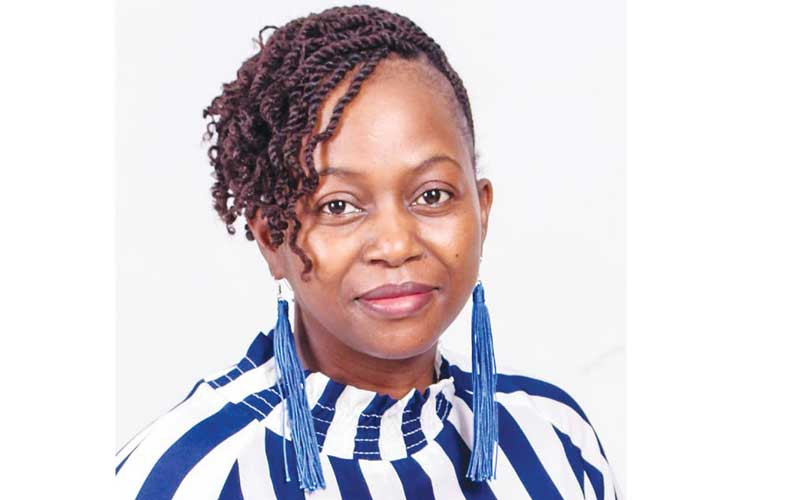
THE title to Mavis Tauzeni’s latest solo exhibition: It is Reality at First Floor Gallery, Harare is a statement with an audacious claim from one of Zimbabwe’s emerging female visual artists. Reality and what it means is a question that has been pondered by many great thinkers through the centuries.
When ancient Greek philosopher Plato broached the subject of reality in his Allegory of the Cave or Plato’s Cave, in which he describes a group of people who watch shadows projected on a wall and perceives them as reality.
In Plato’s Cave, the people are constrained from discovering how the shadows were being cast by real objects passing in front of a fire that was behind them.
French philosopher Jean Baudrillard famously theorised about reality in his book Simulacra and Simulation (1981), which inspired the premise for The Matrix movies in which human bodies stored in an incubator are hooked into a computer programme through which they experience a simulated reality.
Visual artist Tauzeni presents reality as a physical object in the form of a painting. The viewer is challenged to find out what the marks and symbols on the canvas mean and discover the truth behind their projection.
The title of the exhibition finds linguistic resonance in the exclamation “Chokwadi!’’ which means true/real, a response commonly used by women during conversations to concur with the other.
The show is made up of large-scale paintings, which can be read as a sign of confidence and conviction.
In Zimbabwe it cannot be overlooked that size also indicates availability of resources and support.
- Makaza uses silicone to build powerful metaphors
- Makaza’s new work revels in domestic bliss
- SS Fabrik Party: Rethinking local fashion and art spaces
- Confidence blossoms in Tauzeni’s exhibition
Keep Reading
Size matters in maximising visibility in visual art, but making a great impression demands skilful handling of the expansive canvas.
Tauzeni’s big pieces from past exhibitions such as Eve’s Diaries (2015) solo show and On A Clear Day You Can See A Future (2019) with Amanda Mushate — have shown the artist makes use of the space in an increasingly engaging manner.
Defining Tauzeni’s medium is an elusive pursuit because formal categories such as painting, or multimedia are insufficient, and misleading.
By innovation and experiment Tauzeni draws, sprays, paints, prints, pastes, and stitches all on the same canvas.
The result is mesmerising detail with surprising elements that pop up on closer inspection. If reality is a painting by Tauzeni, it is a vivid multi-coloured landscape with semi-abstract bodies hovering in the ether.
Butterflies, the artist’s ever-present symbol of rebirth and evolution weave in and out between the webs of yarn stitched across the female protagonists.
The overlaying of many techniques comes off as messy and untidy in a good way that does not reinforce a reductive concept of beauty.
Clearly, for this project Tauzeni was not concerned with making pretty pictures for people to adore. The artist is motivated by the need to show what she has called “part of ourselves (that) we are not happy about.’’
A painting titled Sisterhood depicts four women clothed only in a uniform white bra and panties. Masks obscure the women’s faces as a strategy that seems to draw attention to their bodies instead of seeking anonymity.
The media often promotes beauty standards and ideal body types. Tauzeni appears to celebrate women of all shapes, sizes and complexions.
Another artwork titled Parts of Me presents scattered pieces of a jigsaw puzzle around a dark silhouette.
There may be a yearning for the pieces to be fitted together, but the power of the painting comes from acknowledging and embracing the chaos.
Ini, Ndega, Pachangu 1 & 2, which translates to “me myself and I”, is a piece depicting a dark face flanked by two masks of different colours.
A viewer might make a choice to decide that one persona represents the real Tauzeni or the subject of the painting.
The artist seems to dismiss the idea of being a one-dimensional character, by insisting on having all versions of herself in the painting identified as the one.
A vibrant piece depicting a woman at her ablutions is titled Monotonous Ritual. She has many arms to signal movement as her hands move across the body.
A rosy, pink colour suggests the fragrant soap and foam on her skin, which is also symbolised by pink flowers.
The title sounds like a protest against close scrutiny that women’s bodies are subjected to by society, which may trigger insecurities.
The biased perception is also anchored by traditional customs that bar women from entering certain religious sanctuaries and participation in ceremonies because they are deemed to be ritually unclean.
There are similarities to the piece titled Fragments to another that was exhibited in 2019 with the double punctuated title Zvashamisa!? The earlier piece depicted a woman from the back, bent over in a red skirt as she picks up her disembodied head from the ground between her legs.
The latest painting appears similar in the posture of the subject but is less explicit, and looks like an abstract version of the former.
Follow us on Twitter @NewsDayZimbabwe







